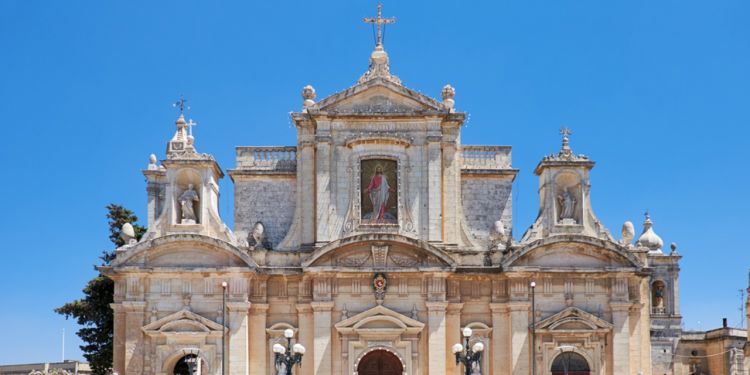About the Maltese Cross

The Knights of St. John, also known as the Knights Hospitaller, adopted the current-day Maltese Cross as their symbol in 1566. Following the Great Siege of Malta in 1565, the Knights began construction on the planned fortified city of Valletta alongside other infrastructural improvements. The Maltese Cross first appeared on their copper coins in 1567 and continues to be used on the Maltese euro coins today.
History of the Knights of St. John
The Knights of St. John can trace their origin to an order of monks attached to a hospice built in the Holy Lands to aid pilgrims. Their misison was to care for the sick and the poor.
In order to provide protection to pilgrims in the Holy Land, the Knights of St. John also established military and naval services.
Having been driven from the Kingdom of Jerusalem in 1291, the Knights sought refuge in the Kingdom of Cyprus and Rhodes. They remained in Rhodes until 1522 when Suleiman the Magnificent laid siege to the island. The surviving Knights were allowed to withdraw, being noted for their valiant defence efforts.
They headed to Sicily and continued in search of a new base until 1530, when King Charles V, Holy Roman Emperor and King of Sicily, allowed them to permanently remain in Malta.
Symbolism of the Maltese Cross
When it first came into use, the Maltese Cross symbolised the eight lands of origin of the Knights of St. John: Auvergne, Provence, France, Aragon, Castille and Portugal, Italy, Germany, and finally the combined England, Scotland, and Ireland.
The eight points also represent the eight obligations of the Knights of St. John, which are:
- To live in truth
- To have faith
- To repent one's sins
- To give proof of humility
- To love justice
- To be merciful
- To be sincere and wholehearted
- To endure persecution
The eight points are also sometimes representative of the Beatitudes. They are used by St. John Ambulance in reference to first aid as the following:
- Observant ("that he may note the causes and signs of injury")
- Tactful ("that he may without thoughtless questions learn the symptoms and history of the case, and secure the confidence of the patients and bystanders")
- Resourceful ("That he may use to the best advantage whatever is at hand to prevent further damage, and to assist Nature's efforts to repair the mischief already done")
- Dexterous ("that he may handle a patient without causing unnecessary pain, and use appliances efficiently and neatly")
- Explicit ("that he may give clear instructions to the patient or the bystanders how best to assist him")
- Discriminating ("that he may decide which of several injuries presses most for treatment by himself, what can best be left for the patient or bystanders to do, and what should be left for the medical men")
- Persevering ("that he may continue his efforts, though not at first successful")
- Sympathetic ("that he may give real comfort and encouragement to the suffering")
The Maltese Cross today still represents the Sovereign Military Order of Malta, the Order of Saint John, the Venerable Order of Saint John, and it has even been adopted by other organisations like Air Malta to represent the island nation.









